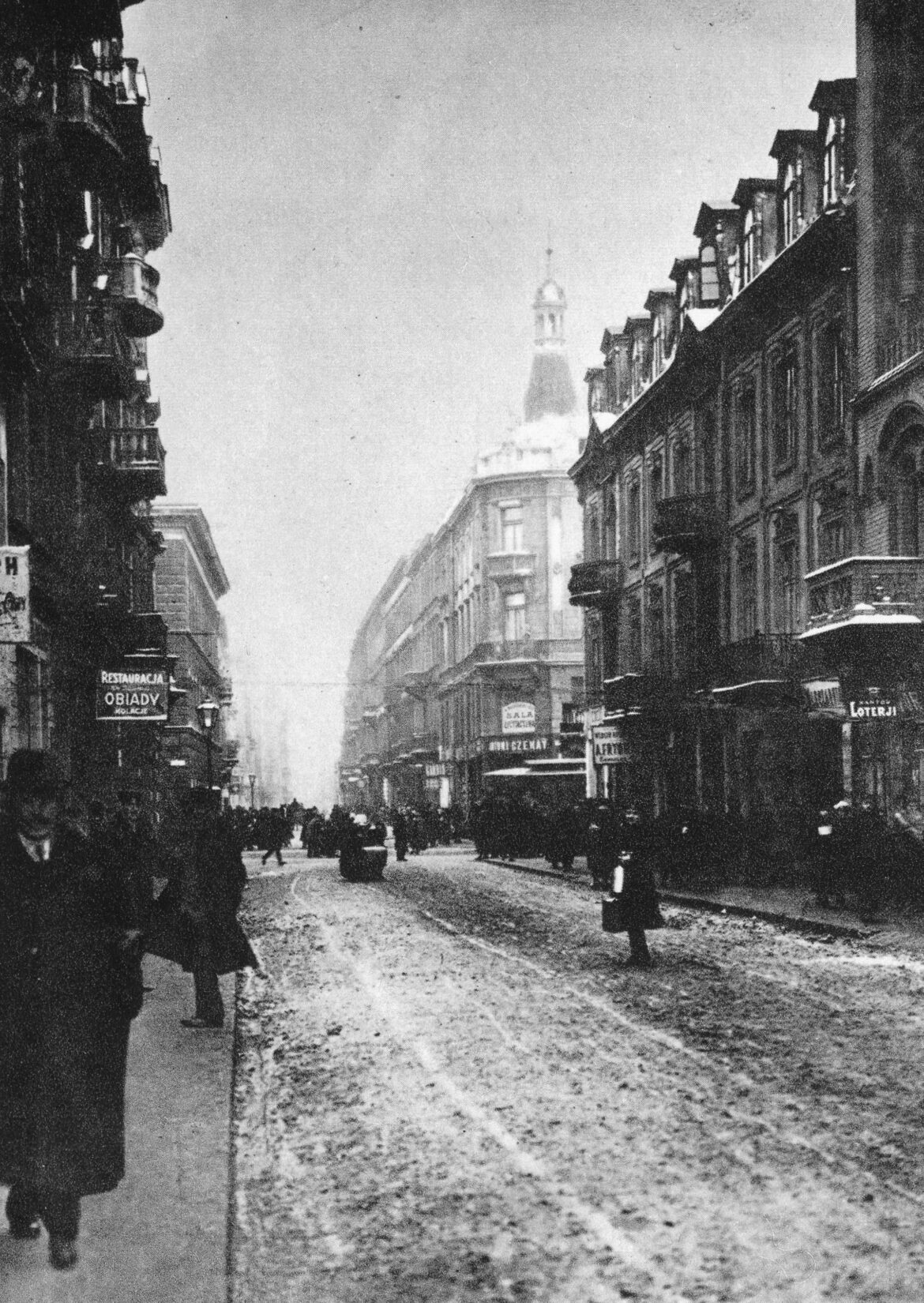During the Second World War, Warsaw was downgraded to the role of the capital of one of the five districts of the General Government. This quasi-state creation, usually referred to as an administrative-territorial unit, was established on 26 October 1939. This decision was intended to break the spirit of the Poles and weaken their resistance to the new German authorities. Warsaw, however, continued to serve as the capital, only this time of the Polish Underground State, where the Poles’ fight against the Germans continued throughout the occupation.
Warsaw during the war had a population of around 1.3 million, including around 370,000 Jews, who created a unique culture. The Vistula River flowing through the city separated the city into two parts, which were connected by three road and two rail bridges. The parts of Warsaw differed in their buildings and degree of industrialisation, and the individual districts had their own unique character.
The organised and underground fight against the invaders began in the capital from 26 to 27 September 1939, while warfare was still in progress. It was then that the Service for Poland’s Victory was established by Brigadier-General Michał Karaszewicz-Tokarzewski. At the same time, other underground organisations began to emerge, often bringing together small groups of people. In 1940, as many as a 100 of them were active. Their purpose was to carry out political and educational activities, and to organise self-help. In this way, Warsaw became the largest conspiratorial centre in the General Government.
Anti-German activities were also undertaken by Polish society on its own. This was mainly passive resistance. It was expressed in disregarding German orders or even in openly disobeying them. Sabotage in factories was also increasingly common. These activities were carried out as part of the so-called Tortoise Action, which entailed slow and inefficient work.
Young people and scouts also became active in sabotage activities. The latter became involved in small sabotage actions, particularly in 1942. The scouting youth were active in the Organisation of Small Sabotage “Wawer”-“Palmiry”.
With time, the main role in the fight against the occupant began to be performed mainly by underground organisations. Their activity largely depended on the Government Delegation for Poland (Delegatura Rządu na Kraj), which was established in the autumn of 1940 and was subordinate to the Polish Government in Exile. Its advisory body was the Political Consultative Committee, and from January 1944 Council of National Unity. The role of the military arm of the Polish Underground State was performed by the Headquarters of the Union of Armed Struggle-Home Army.
During the occupation, about a thousand different actions were carried out in Warsaw. Many of them were planned, but some turned out to be spontaneous reactions to the occupants’ actions. It is worth mentioning that often the latter arose as a result of the defence of secret printing houses discovered by the Gestapo. In total, more than a dozen armed clashes with the occupant took place on the territory of Warsaw in such circumstances.
There is no doubt that in the initial period of the occupation, i.e. until the autumn of 1942, the armed struggle in Warsaw was of a defensive nature. Of course, there was a gradual development of its forms, there were even small diversionary actions, mainly in factories producing weapons, but this was not widely reported to the public in the underground press. Only the increasing terror of the occupant and numerous arrests, as well as deportations, e.g. in the Zamojszczyzna region (Aktion Zamosc), as well as numerous pacification actions in the countryside, led to a reorientation of the views of the leadership of the Polish Underground State as regards the armed struggle. These changes resulted in the improvement of forms and methods of combat, their specialisation, and above all- their intensification. These actions resulted in the creation of the Kedyw – an organisational unit of the Home Army specialising in carrying out combat actions, assassinations, sabotage and diversions, which were aimed at the German occupation administration, security forces, police and the army of the Third Reich. In the capital, the Kedyw numbered around 2,500 soldiers specially trained in sabotage and diversion.
The revision of the strategy for fighting the Germans resulted in more and more frequent raids by Polish underground groups on the occupant’s railway transports (e.g. Action “Wieniec” – 7/8 October 1942). The Polish underground also decided to use individual terror against representatives of the administrative and security apparatus of the General Government. Confidants were also liquidated. In particular, the assassination of the commander of the SS and the German police, SS-Brigadenfürer Franz Kutschera caused widespread publicity. In addition, expropriation actions were also at stake. For example, on 11 August 1943, a detachment of the Kedyw of the Home Army Headquarters seized a transport of money being carried from the Emission Bank. In this way, the underground obtained 105 million Polish zlotys.
In addition, actions to recapture prisoners proved to be important. More than a dozen of them were organised in the capital. The most famous was carried out near the Arsenal – on 26 March 1943. As a result, 21 prisoners were recaptured while they were transported from Aleja Szucha to Pawiak.
A determined armed fighting was also taken in April 1943 by the Jews remaining alive in the Warsaw Ghetto. Their problem, however, as well as that of the entire Polish underground, was the notorious lack of weapons. It was obtained from Allied air drops, captured from the enemy and bought on the black market.
The culmination of the struggle of the Polish Underground State and Polish society was the Warsaw Uprising of 1944.





